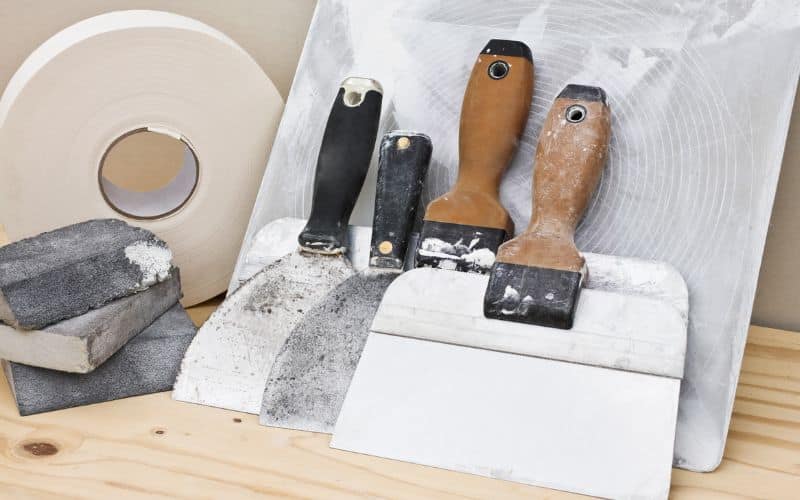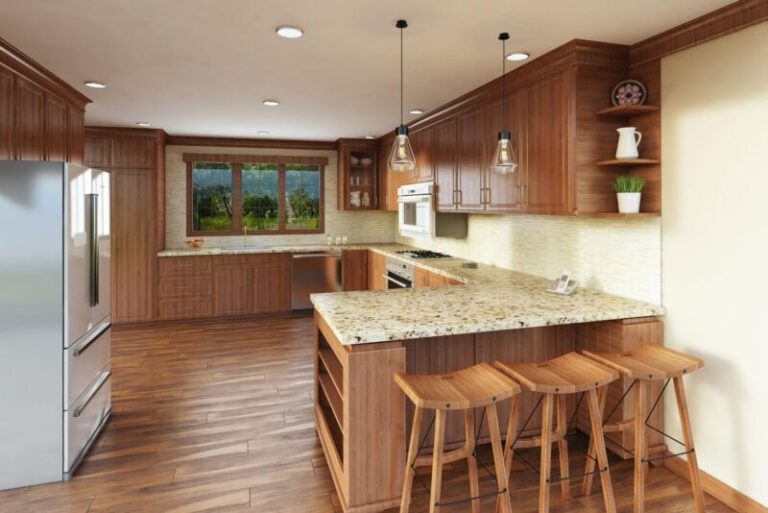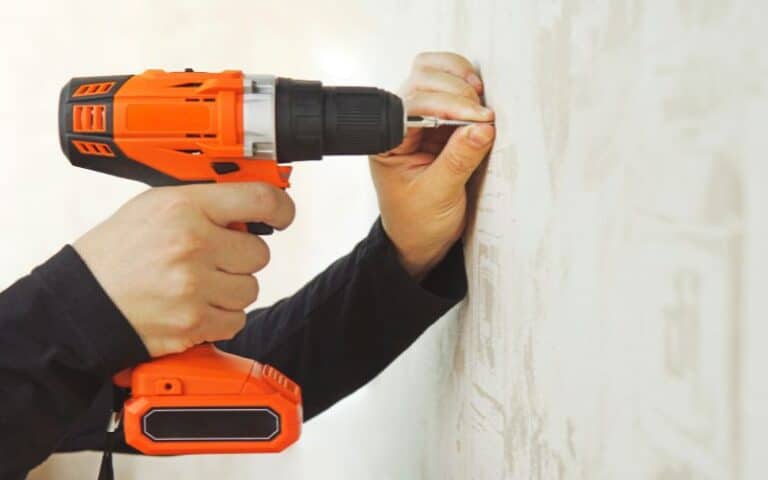Wood filler is a perfect patching material for wood surfaces. It is famous for filling and fixing holes and cracks in hardwood.
Unlike other wall materials, drywall has a wood-like feeling that makes it seem flexible. This feature makes you wonder if you can patch drywall holes with wood filler.
The answer to your question is in this article, so keep reading to get your answer and answers to other related questions.
You can use wood filler on drywall if the holes are small. Wood filler works perfectly to patch these holes. However, the surface of the patched-up area would be rough and may have a different color compared to other parts of the drywall. You will have to spend more time sanding down the surface to make it smooth and even.
In this article, I will explain if you can use a wood filler on drywall and help you know the best wood filler for drywall.
By the end, you’ll also understand which you should use for drywall between spackling compound or wood filler and if drywall putty and wood filler are the same.
Ready for a Drywall Quiz?
Can I Use a Wood Filler on Drywall?

Yes, it is possible to use a wood filler on drywall. It works perfectly for patching up small holes in the drywall.
However, it may be challenging to smoothen like a standard drywall repair material. The surface of the patched area will be rough after applying the wood filler.
The area won’t blend with other smooth and flat wall parts. You must spend a long time sanding the spot to align it with other sections.
At the same time, you may have to wait for hours until it completely dries and all the dust settles before sanding the spot.
Sometimes, dust particles might take several days to settle in a low-humidity room, especially without fans running.
So, you might spend more time completing the project than using standard drywall materials.
Another problem with using wood filler on your drywall is matching the colors. There are chances that the colors won’t blend when the filler completely dries out.
This problem is common with lighter-colored drywall and dark-colored wood fillers. The patchwork may look rough and disfiguring.
What is the Best Wood Filler for Drywall?
The best wood filler for drywall depends on the location of the drywall and the drywall’s weather exposure.
There are different types available for individual locations. Therefore, you need to be sure the type you use will make your drywall appear more natural.
The wrong wood filler could disfigure the wall forever and reduce the drywall’s lifespan. You may need to repair or dispose of the wall in extreme cases.
In addition, some wood fillers are perfect for outdoor use, while others are perfect for indoor repairs. Some other ones are suitable for both indoor and outdoor patchwork.
Wood fillers come in different consistency, quality, and prices. So, consider the quality according to your budget before using it.
Below are the standard wood fillers to help you identify the best for your purpose and budget.
#1. Cellulose Wood Filler
Cellulose wood filler looks more natural than any other one. It is perfect for stained drywall to conceal the discoloration.
It easily blends with the drywall color to make the patchwork less obvious. The best part is that this wood filler is suitable for outdoor and indoor use.
However, this wood filler may cost slightly more because of its amazing result.
#2. Epoxy Wood Filler
This wood filler gives your drywall a beautiful blend after its application. Most people prefer epoxy wood filler because of its durability and strength.
It is suitable for outdoor and indoor drywalls but takes longer to set. It is also difficult to mix because it has two components.
In addition, it is one of the most expensive wood filler options because of its quality. However, the result is worth every money spent.
#3. Latex Wood Filler
Latex wood filler is perfect for patching holes in outdoor drywalls. It has a water-resistant quality.
This wood filler can also withstand extreme weather conditions. One significant advantage of latex wood filler is its ability to add and blend easily.
Unlike most wood fillers that take hours to dry, this one doesn’t require much time because it dries in a few minutes.
Latex wood filler is quite affordable and easily accessible. It is perfect for DIY projects.
#4. Gypsum Wood Filler
Gypsum wood filler is another available option perfect for indoor drywall repairs. After it sets, it has a different consistency that matches that of high-quality flooring.
However, it doesn’t have resistance against water, so you should avoid using it on drywalls around wet areas.
Also, avoid using it outdoors as a wood filler option for wood and drywall. Gypsum wood filler is affordable and easy to use.
Should I Use a Wood Filler or a Spackling Compound for Drywall?
Using a spackling compound instead of a wood filler for drywalls is best. Although they have similar functions, the spackling compound is perfect for patching drywalls.
The primary purpose of spackle is to fill holes made by nails and screws in drywall. It is also suitable for fixing minor blemishes in drywall.
It is a quick-drying adhesive that easily blends with the drywall. Spackle forms a perfect consistency with the drywall.
Sanding down spackling compound on drywall gives you a smooth and even result. You only have to paint the patchwork to match the rest of the wall.
On the other hand, wood filler is suitable for patching gaps or cracks in the wood. It fills holes and fixes blemishes in wood surfaces.
You only have to apply and sand it down to get a smooth and even result. Then, you can paint the spot to match the rest of the wood.
Although you can use wood filler on drywalls, it doesn’t give the same result as spackle. Wood filler is only perfect for patching small holes in the drywall.
Using it on a large hole in the drywall damages the aesthetic effect of the piece. The wood filler won’t blend, and it will disfigure the wall.
Other features make the spackling compound a better patching material for drywall than wood filler.
The table below contains their individual features.
| Spackling Compound | Wood Filler |
|---|---|
| It doesn’t shrink because of its lightweight. | It shrinks because it gets absorbed into the holes and cracks. |
| It remains soft enough to apply and fix wide gaps. | It hardens quickly and requires more layers for wide gaps. |
| It is easier to sand to get an even surface. | Stressful sanding leaves the surface rough. |
| It is not stainable. | Some water-based wood filler stains easily. |
| Paint adheres to it. | The paint doesn’t adhere to it. |
Is Drywall Putty the Same as Wood Filler?
Drywall putty is different from wood filler. They both serve different purposes, each of which has its unique quality.
Drywall putty refers to a product designed to patch and repair drywall, while wood filler refers to a range of products designed to patch and repair hardwood.
Although they have different purposes, you can substitute drywall putty for wood filler in small unpressurized surfaces and indoor applications.
In addition, drywall putty is suitable for filling and smoothing joints of adjacent drywall panels. It is like the cement of drywall and smears easily into the gaps in the seams.
It has a goo-like consistency that makes spreading and blending easy. On the other hand, the wood filler has a mush-like consistency that allows you to spread it all over wood cracks.
However, drywall putty and wood filler require time to dry before you can sand down the surface to get an even result.
Wood filler may dry faster, but the duration depends on factors like ventilation, humidity, temperature, and product quality.
Drywall putty may dry faster if the conditions are unfavorable against wood filler.






